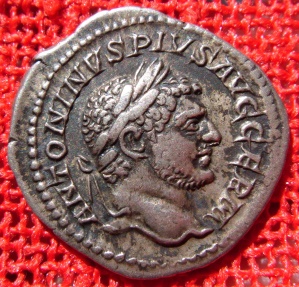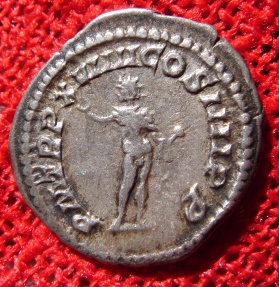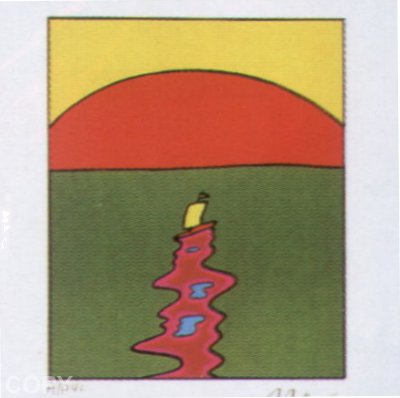Notes: Laureate head right / Sol standing facing, head left, holding globe and raising right hand.
Obverse: Caracalla was the popular nickname of Marcus Aurelius Severus Antoninus Augustus (4 April AD 188 – 8 April AD 217), Roman Emperor (AD 198–217). The eldest son of Septimius Severus, Caracalla reigned jointly with his father from 198 until Severus’ death in 211. For a short time Caracalla then ruled jointly with his younger brother Geta until Caracalla had Geta murdered later in 211. Caracalla is remembered as one of the most notorious and unpleasant of emperors (according to the literate elite) because of the massacres and persecutions he authorized and instigated throughout the Empire.
Caracalla’s reign was also notable for the Constitutio Antoniniana (also called the Edict of Caracalla or the Antonine Constitution), granting Roman citizenship to all freemen throughout the Roman Empire, which according to the hostile historian Cassius Dio, was done for the purposes of raising tax revenue. This gave all the enfranchised men the two first names of Caracalla "Marcus Aurelius". Caracalla also commissioned a large public bath-house (thermae) project in Rome, and the remains of the Baths of Caracalla are still one of the major tourist attractions of the Italian capital.
Caracalla’s reign was also notable for the Constitutio Antoniniana (also called the Edict of Caracalla or the Antonine Constitution), granting Roman citizenship to all freemen throughout the Roman Empire, which according to the hostile historian Cassius Dio, was done for the purposes of raising tax revenue. This gave all the enfranchised men the two first names of Caracalla "Marcus Aurelius". Caracalla also commissioned a large public bath-house (thermae) project in Rome, and the remains of the Baths of Caracalla are still one of the major tourist attractions of the Italian capital.
Denomination: In the Roman currency system, the denarius was a small silver coin first minted about 211 BC during the Second Punic War. It became the most common coin produced for circulation but was slowly debased in weight and silver content until its replacement by the double denarius, called the antoninianus, early in the 3rd century AD. The word denarius is derived from the Latin dēnī "containing ten", as its value was 10 asses, although in the middle of the 2nd century BC it was recalibrated so that it was now worth sixteen asses or four sestertii. It is the origin of several modern words such as the currency name dinar; it is also the origin for the common noun for money in Italian denaro, in Portuguese dinheiro and in Spanish dinero.
From Wikipedia
From Wikipedia
Period: Imperial Rome. As the Roman Republic began to implode because of
corruption and infighting among powerful members of the Roman Senate, a new type of
Roman Republican coinage emerges, that of the military strongmen who dominated and
fought among each other before the final fall of the Republic. The drama surrounding
the fall of the Roman Republic is a story full of political intrigue, military action, betrayal,
murder and sex scandals. Different parts of this story have been told and retold by
ancient historians, modern day scholars, dozens of Hollywood movies and even an HBO
miniseries. All of the actors in this great drama, Crassus, Pompey, Julius Caesar, Brutus
and Cassius, Mark Antony and Cleopatra and the last man standing at the end of it all,
Octavian (later known as the first emperor of Rome, Emperor Augustus) all minted coins
during this time bearing their names and propaganda images supporting their factions
and political ideals.
Culture: Ancient Rome. A famous catch phrase "Rome was not built in a day"
definitely applies to the Roman civilization. Rome stated as a series of small villages among the
famous seven hills of Rome along the river Tiber. Eventually through conquest, diplomacy, wise
policies of indirect rule and assimilation, the Romans were able to not only unify the Italian
peninsula, but though a series of brutal wars against regional powers established a great Empire
that spanned Europe, Asia and Africa, making the Mediterrean Sea and "Roman Lake."
All Roman coinage can generally be divided into eight time periods as described below. An interesting thing about Roman coins minted during these eight time periods is that you can literally see the "Rise and Fall" of the Roman Empire on its coinage as the sharp imagery and pure silver and gold coins of the Roman Republic and Early Imperial Period gradually devolves into crude, illegible and heavily debased coins of the "Barracks Emperors" and "Barbarian" Period.
All Roman coinage can generally be divided into eight time periods as described below. An interesting thing about Roman coins minted during these eight time periods is that you can literally see the "Rise and Fall" of the Roman Empire on its coinage as the sharp imagery and pure silver and gold coins of the Roman Republic and Early Imperial Period gradually devolves into crude, illegible and heavily debased coins of the "Barracks Emperors" and "Barbarian" Period.
Item created by: gdm on 2016-08-14 11:34:02. Last edited by gdm on 2016-08-14 16:29:26
If you see errors or missing data in this entry, please feel free to log in and edit it. Anyone with a Gmail account can log in instantly.
If you see errors or missing data in this entry, please feel free to log in and edit it. Anyone with a Gmail account can log in instantly.








